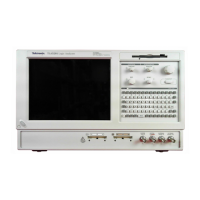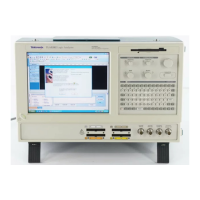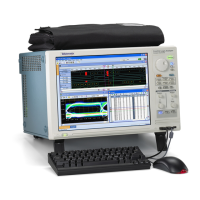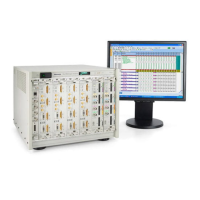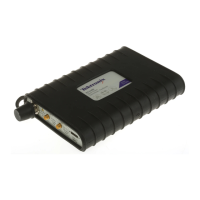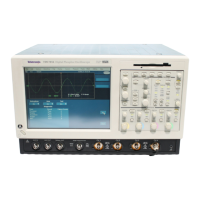Operating Information
2-6
TLA5000 Series Service Manual
After the power-on diagnostic finishes checking the basic functionality of the
logic analyzer, you need to perform an incoming inspection. The incoming
inspection consists of verifying the basic operation of the logic analyzer.
For a more detailed functionality check, run the following self-calibration and
extended diagnostics procedures.
NOTE. Allow the mainframe to warm up for 30 minutes before running the
self-calibration.
To run self-calibration and diagnostics, perform the following:
1. Disconnect any probes that are attached to the input connectors.
2. Select the System menu and click Calibration and Diagnostics.
3. Run the self-calibration and then the extended diagnostics by selecting the
proper tab. Results of the tests display on the individual property page.
Connect the P64xx logic analyzer probes to a signal source, start an acquisition,
and verify that the acquired data is displayed in either the listing or waveform
windows. You can also use the Activity Indicators in the logic analyzer S etup
window to view signal activity at the probe tips.
NOTE. If you connect probes to any channels other than the A2 and A3 groups,
you must define the groups and channels in the Setup window and set the
threshold voltages before acquiring data on other probe channels.
The logic analyzer ships with the product software installed, so only perform
these procedures if reinstallation becomes necessary.
The Windows operating system and drivers are factory installed on the logic
analyzer hard disk. The hard disk Image CDs serve as a backup in the event that
you have to restore the hard disk drive.
Performing the Incoming
Inspection
Checking the P64xx Logic
Analyzer Probes
(Optional)
Software Installation

